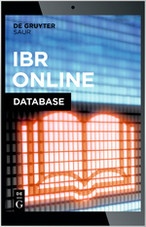- 04 June 2021
Article/Publication Details
Views: 2141
BEING STRUCK: GADAMER ON THE CONTEMPORANEITY OF ART
| Title in the language of publication: | BEING STRUCK: GADAMER ON THE CONTEMPORANEITY OF ART |
| Author: | PATRICK MARTIN |
| Issue: |
HORIZON. Studies in Phenomenology. Vol. 10, №1 (2021), 286-304 |
| Language: | English |
| Document type: | Research Article |
| DOI : 10.21638/2226-5260-2021-10-1-286-304 | PDF (Downloads: 1692) |
Abstract
With this article I offer a close reading of Gadamer’s Aesthetics and Hermeneutics. The reason I draw attention to this essay is as a response to criticism aimed at Gadamer’s hermeneutic account of art. In its reception, it has occasionally been viewed as too hermeneutical, too focused on understanding. I maintain that Aesthetics and Hermeneutics can be considered exempt from this critique. Here, Gadamer offers us the hermeneutic experience in its most aesthetic guise: in being struck by the significance of the artwork. The main purpose of this article is to clarify this experience. This task I undertake in two steps. First, I emphasize the aesthetic nature of this experience of “being struck” by the artwork in an answer to Figal’s critique. As a supplement to Gadamer’s theoretical remarks in Aesthetics and Hermeneutics, I consider the performance piece Faust by Anne Imhof. The second step of my argument intends to show that Gadamer does not “reduce” the aesthetic experience to a hermeneutic experience of meaning but grounds the experience of art hermeneutically. I will argue for my thesis by closely reconstructing Gadamer’s argument in Aesthetics and Hermeneutics. The guiding question is, what is the significance of this aesthetic experience for Gadamer’s hermeneutics? Gadamer conceptually clarifies the experience of “being struck” in terms of the notion of contemporaneity. In my interpretation, the experience of art shakes us with a sense of self-implication.
Keywords
Hans-Georg Gadamer, hermeneutics, aesthetics, art, experience, contemporaneity.
References
- Bertram, G. W. (2002). Hermeneutik und dekonstruktion: Konturen einer auseinandersetzung der gegenwartsphilosophie. München: Fink.
- Bubner, R. (1989). Ästhetische Erfahrung. Frankfurt am Main: Suhrkamp.
- Davey, N. (2013). Unfinished Worlds: Hermeneutics, Aesthetics and Gadamer. Edinburgh: Edinburgh University Press.
- Dewey, J. (2005). Art as Experience. New York: Perigee.
- Figal, G. (2016). Aesthetics and Perception. In N. Keane & Ch. Lawn (Eds.), The Blackwell Companion to Hermeneutics (220-227). West Sussex: Wiley Blackwell.
- Gadamer, H.-G. (1986a). On the Contribution of Poetry to the Search for Truth (N. Walker, Trans.). In R. Bernasconi (Ed.), The Relevance of the Beautiful and Other Essays (105-115). Cambridge: Cambridge University Press.
- Gadamer, H.-G. (1986b). The Relevance of the Beautiful (N. Walker, Trans.). In R. Bernasconi (Ed.), The Relevance of the Beautiful and Other Essays (1-53). Cambridge: Cambridge University Press.
- Gadamer, H.-G. (1989). Truth and Method (2nd ed.) (J. Weinsheimer & D. G. Marshall, Trans.). London: Sheed & Ward.
- Gadamer, H.-G. (1990). Gesammelte Werke. Band 1, Hermeneutik: Wahrheit Und Methode: 1. Grundzüge Einer Philosophischen Hermeneutik (6th ed.) Tübingen: Mohr.
- Gadamer, H.-G. (1993a). Die Aktualität des Schönen. In Gesammelte Werke. Bd. 8, Ästhetik Und Poetik 1: Kunst Als Aussage (94-142). Tübingen: J. C. B. Mohr.
- Gadamer, H.-G. (1993b). Ästhetik und Hermeneutik. In Gesammelte Werke. Bd. 8, Ästhetik Und Poetik 1: Kunst Als Aussage (1-8). Tübingen: J. C. B. Mohr.
- Gadamer, H.-G. (1993c). Wort und Bild — “so wahr, so seined”. In Gesammelte Werke. Bd. 8, Ästhetik Und Poetik 1: Kunst Als Aussage (373-399). Tübingen: J. C. B. Mohr.
- Gadamer, H.-G. (1995). Hermeneutik und ontologische Differenz. In Gesammelte Werke. Bd. 10, Hermeneutik im Rückblick (58-70). Tübingen: J. C. B. Mohr.
- Gadamer, H.-G. (2007a). Aesthetics and Hermeneutics (D. E. Linge, Trans.). In R. E. Palmer (Ed.), The Gadamer Reader: A Bouquet of the Later Writings (124-131). Evanston: Northwestern University Press, 2007.
- Gadamer, H.-G. (2007b). The Artwork in Word and Image (R. E. Palmer, Ed. & Trans.). The Gadamer Reader: A Bouquet of the Later Writings (195-224). Evanston: Northwestern University Press.
- Gadamer, H.-G. (2007c). Hermeneutics and the Ontological Difference (R. E. Palmer, Ed. & Trans.). The Gadamer Reader: A Bouquet of the Later Writings (357-371). Evanston: Northwestern University Press.
- Grondin, J. (2001). Von Heidegger zu Gadamer: Unterwegs zur hermeneutik. Darmstadt: Wissenschaftliche Buchgesellschaft.
- Grondin, J. (2002). Gadamer’s Basic Understanding of Understanding. In R. J. Dostal (Ed.), The Cambridge Companion to Gadamer (36-51). New York: Cambridge University Press.
- Grondin, J. (2003). The Philosophy of Gadamer (K. Plant, Trans.). Chesham: Acumen.
- Hirsch, E. D. Jr. (1967). Validity in Interpretation. New Haven: Yale University Press.
- Martin, P. (2018). Between Hermeneutics and Aesthetics: Reconsidering Truth and Method as an “Aesthetics of Truth”. Avant, (2), 169-186.
- Michelfelder, D. P. (1997). Gadamer on Heidegger on Art. In L. E. Hahn (Ed.), The Philosophy of Hans-Georg Gadamer (437-456). Chicago: Open Court.
- Noë, A. (2015). Strange Tools. New York: Hill and Wang.
- Ricœur, P. (1991). The Conflict of Interpretations: Debate with Hans-Georg Gadamer. In M. J. Valdés (Ed.), A Ricoeur Reader: Reflection and Imagination (216-241). Toronto: University of Toronto Press.
- Rilke, R. M. (2011). Selected Poems. Oxford: Oxford University Press.
- Shusterman, R. (1997). The End of Aesthetic Experience. (Decline of Concept in the 20th Century). The Journal of Aesthetics and Art Criticism, 55 (1), 29-41.
- Vattimo, G. (2008). Art, Feeling, and Originality in Heidegger’s Aesthetics (L. D’Isanto, Trans.). In S. Zabala (Ed.), Art’s Claim to Truth (57-73). New York: Columbia University Press.
- Zabala, S., & Marder, M. (2014). Introduction: The First Jolts. In M. Marder & S. Zabala (Eds.), Being Shaken: Ontology and the Event (1-10). Basingstoke: Palgrave Macmillan.

This work is licensed under a Creative Commons Attribution-NonCommercial 4.0 International License.

|
|
|
|
|

|
|
|
|
|

|
|
|
|
|
|
|
|
|
|
|
|
|
|
|
|
|
|
|
|
|
|

|
|
|
|
|
|
|
|
|
|
|
|
|
|
|
|
|
|
|
|
|
|
|
|
|
|
|
|

|

|
Social networks:





